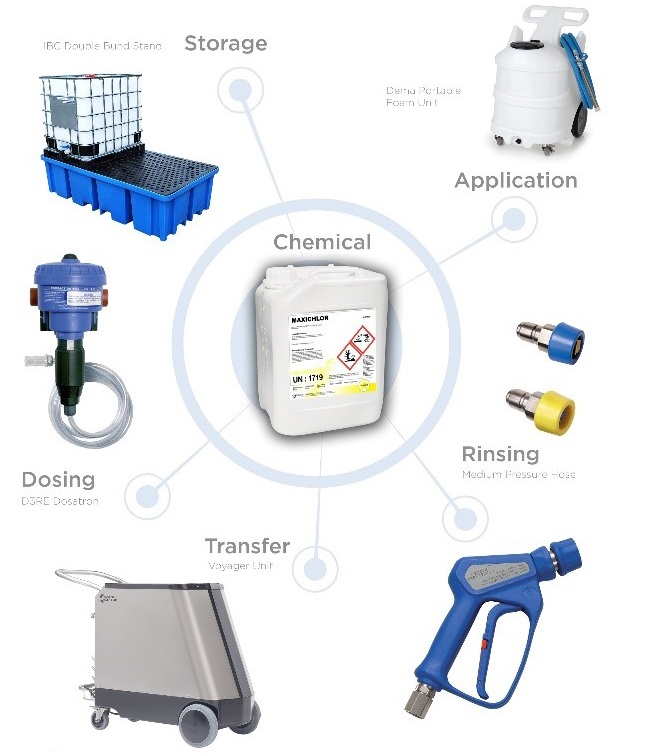Rinse guns are vital tools as they ensure quick removal of debris and chemical residues from surfaces and can access areas that manual methods cannot (niches, crevices, etc.).
There are three main types of pressure systems used for rinsing in the food industry:
- High pressure (pumped system) - 50 to 70 bar; delivering 10 to 15 L of water per min
- Medium pressure (pumped system) - 15 to 25 bar; delivering 20 to 40 L of water per min
- Low pressure (mains water supply or pumped system) - 2 to 15 bar; delivering 10 to 50 L of water per min.
High Pressure Rinsing
While still used in the low-risk food manufacturing sector, such as abattoirs, cutting and boning plants, and poultry factories, the use of high pressure rinse guns in the food industry has been virtually eliminated in high risk/high care food processing sectors in the UK & IE due to the significantly increased risk of cross-contamination.
A disadvantage of a high-pressure system is that it causes atomisation. After impact on a surface, these contaminated water droplets are dispersed into the local atmosphere and will remain there for several hours before descending onto already cleaned surfaces or product, thereby leading to cross contamination.
Medium & Low Pressure Rinsing
Because water droplets generated from low and medium pressure systems are a lot larger, the risk of atomisation is significantly reduced. However, overspray will always occur and contaminate nearby surfaces. Therefore, cleaning methods should be designed such that operatives are aware of this happening and procedures are put in place to ensure that the risk is reduced.
Another disadvantage of using high pressure is that the cleaning force and heat transfer from hot water is lost after approximately 20 cm (8 inches) from the nozzle and water becomes more of a mist rather than a jet. A medium pressure system will deliver an effective cleaning force and heat transfer of up to at least 10 times that figure, depending on its set up.
Challenges
Two other major challenges arise from the rinsing process: damage to electrical components and hose management.
Improved machinery design, higher dust and water ingress protection for electrical components, locating electrics far from the areas to be cleaned, and covering items such as control panels and motors before wet cleaning all can help to reduce the possibility of electrical damage.
Hose management is a continuous challenge in all food and beverage processing environments, particularly in those deemed high care and high risk. As hoses come into constant contact with the floor, the risk of cross contamination to operative or processing equipment is high.
There are numerous reel, hanger and trolley options for hoses and each has its advantages and disadvantages. One of the best options is to not utilise reels, hangers or trollies but rather, to store the hoses after each use in a designated container holding a disinfectant solution. This ensures that any microbial contamination is significantly reduced before the next use. If this option isn’t viable and the use of reels, hangers and trollies is unavoidable, the key step is to undertake a risk assessment and determine the best option for that environment.
The placing of centralised or decentralised chemical satellite stations and the installation of hose reels, together with the hose length leading from such points, should be carefully chosen to minimise the chance of hoses having to be led over production lines to clean adjacent lines. Training and supervision in good cleaning practices are also vital tools in preventing this from occurring, particularly for hoses attached to mobile chemical application units.
It is also important to ensure that hoses and guns are routinely inspected and repaired or replaced. Any frayed hoses could provide a microbiological and a foreign body hazard and any holes could cause water or chemical to be sprayed onto surfaces or personnel.
Our support teams advise on the options available to meet your capital budget and to optimise the clean. Water, energy and time savings are closely looked at by our experienced teams. All equipment has been specially selected for quality, reliability and is offered at very competitive prices.

